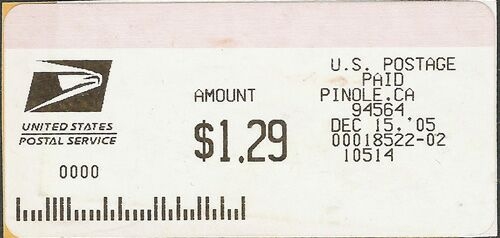
Packet Letter and Markings
Mail carried by a ship operating on a regular schedule authorized by the Post Office.
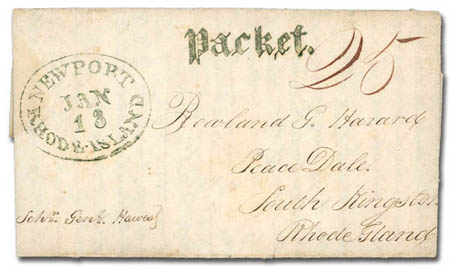
Pair
Two attached stamps. If they are attached at the left and right they are a horizontal pair, and if attached top to bottom they are a vertical pair.

Pan-American Issue
(US 294-299) a set of U.S. commemorative postage stamps issued to promote the Pan-American Exposition of 1901 in Buffalo, N.Y.
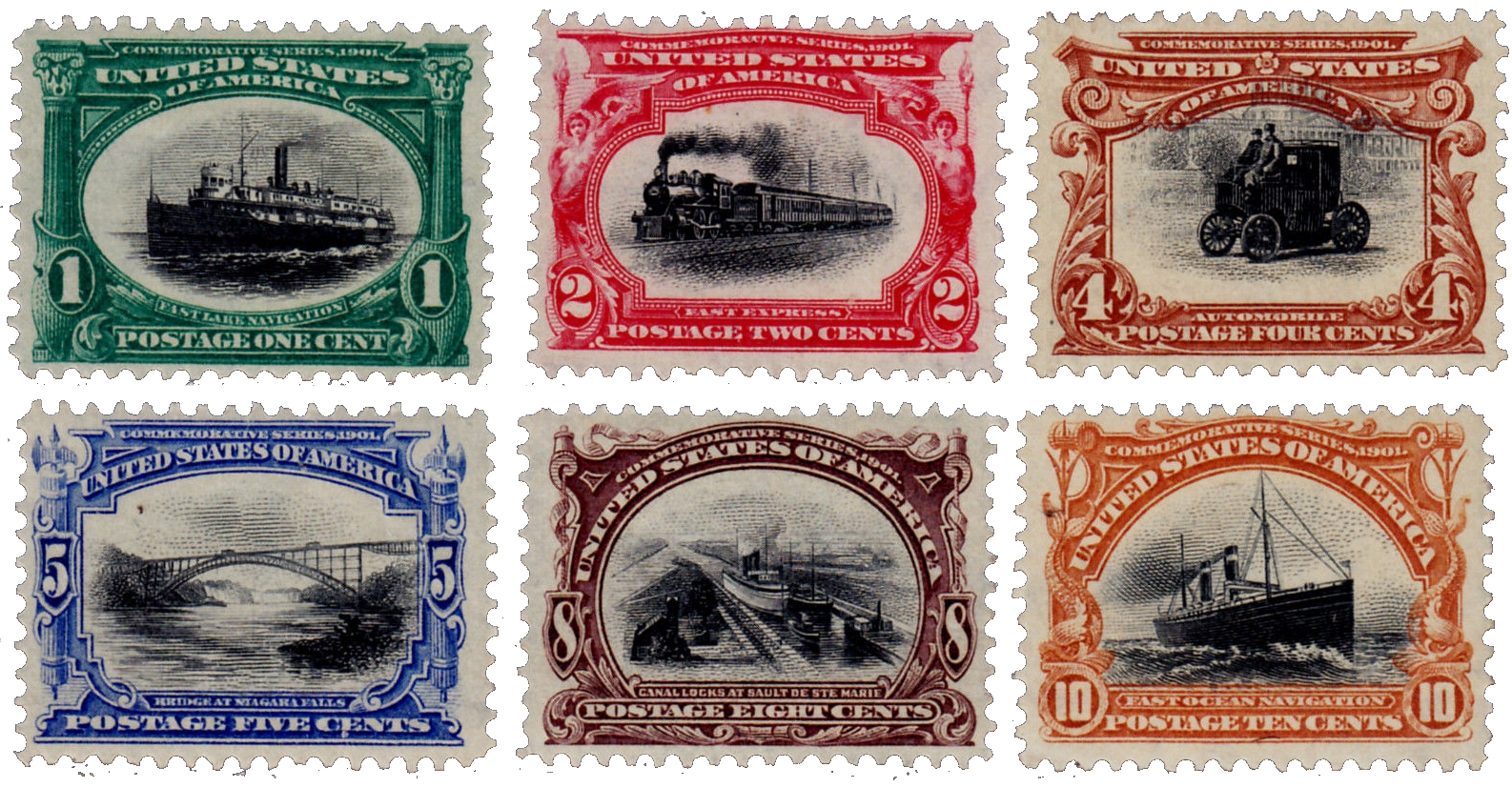
Panama-Pacific Exposition Issue
(US 397-404) a set of U.S. commemorative postage stamps issued to promote the Pan-Pacific Exposition of 1915 in San Francisco, California. The set was first issued in 1913 to provide advance promotion for the 1915 event.

Pane
A unit of stamps cut from a full sheet (shown in yellow). A pane of stamps is what is sold by the post office, commonly, but not correctly called "sheets" by many collectors. The sheets on many classic U.S. stamps had only two panes, many of the Bureau issues had four panes, and modern sheets may have six or more panes.

Paquebot
A cancellation on a parcel or letter indicating the item was mailed aboard a ship that has no official post office.

Parcel Post Stamp
A mail classification for mailing most packages. US Parcel Postage Stamps were issued for this service in the first half of the year in 1913 and were discontinued by July of that year.
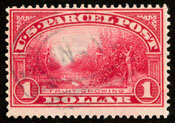
Parcel Post Postage Due Stamp
US Postage Due stamps issued in conjunction with the Parcel Postage stamps of 1913.
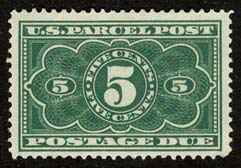
Part Perforate
Stamps that are normally perforated but have one or more sides totally lacking the intended perforations.
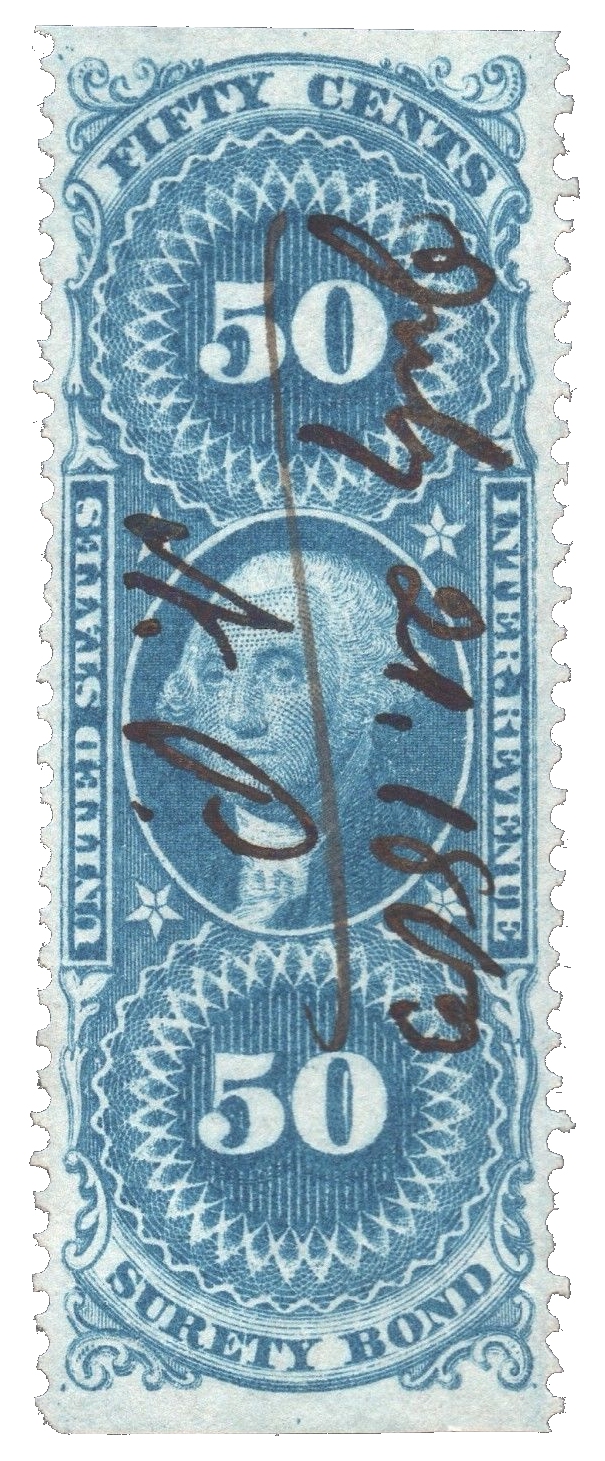
Partial Plate Number
A coil stamp or booklet pane with a partial plate number appearing in the margin. Since the part of the sheet that contained the plate number was usually trimmed off, plate numbers on coil stamps and booklet panes appear only infrequently and rarely in full and usually bring a premium.
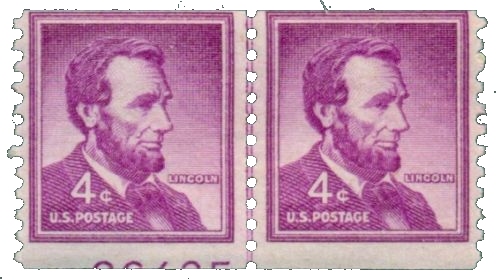
Paste-up/Paste-up Pair
A coil stamp or booklet pane with a partial plate number appearing in the margin. Since the part of the sheet that contained the plate number was usually trimmed off, plate numbers on coil stamps and booklet panes appear only infrequently and rarely in full and usually bring a premium.
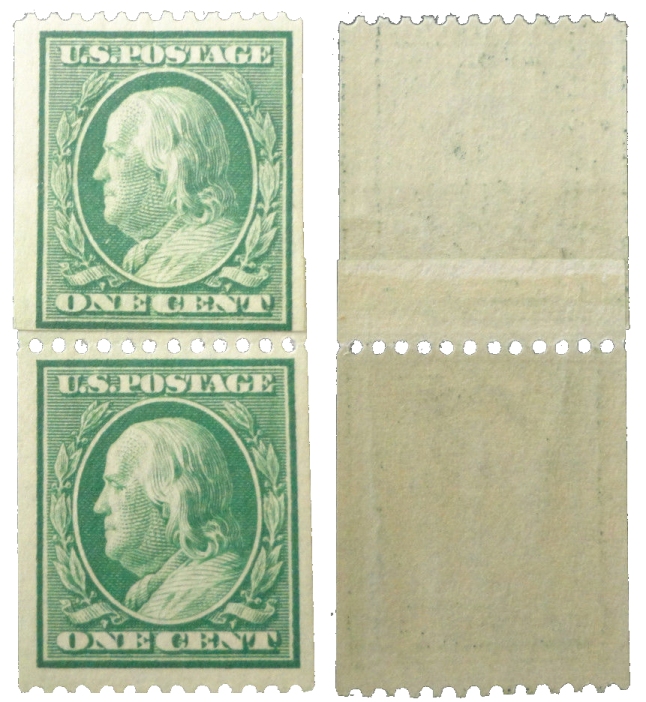
Patent Cancellation Machine
A canceling device that defaced a stamp to prevent reuse. There were a number of solutions to the problem of permanently defacing the stamp, in general by destroying a part of the stamp's paper, and many of these were patented by the inventor.

Patriotic Cover
An envelope decorated with patriotic pictures and slogans showing support during the Civil War.
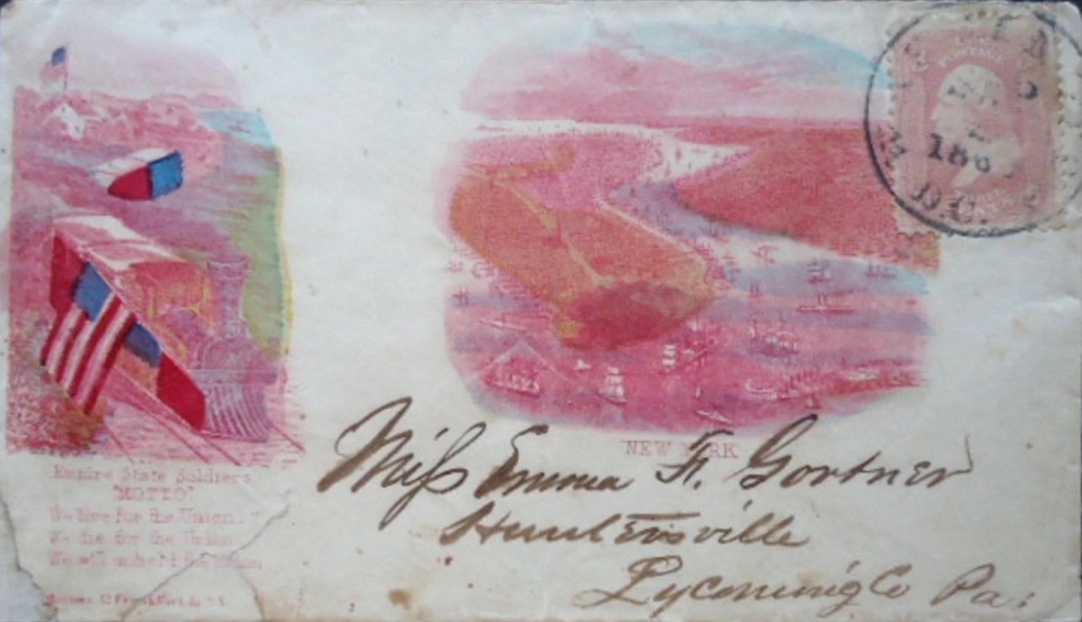
Pelure Paper
A very thin, transparent, yet strong paper that looks a little like moderately darkened onion-skin paper.
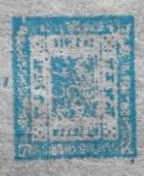
Pen Cancellation
A cancellation of a stamp by pen or marker. Early stamps may show a pen (or manuscript) cancel because the post office had no canceling device. Stamps with pen cancels are usually valued less than stamps with normal cancels. Today, stamps on envelopes or packages that were missed in the normal canceling process are pen cancelled by letter carriers.

Perf
The term "perf" is generally used interchangeably with perforation. It is also used as a shortened form of "perforated", as in "perf 10" for "perforated 10 (holes per 2cm)".

Perfin
(Shortened form of "perforated initials" or "perforated insignia") A stamp with privately punched holes, similar to perforations, in the form of initials or a symbol that identifies the owner of the stamp. Perfins were produced by businesses and organizations to prevent theft or misuse of their stamps.

Perforation (Perf)
Rows or columns of holes punched between stamps to ease separation from the sheet in which they were printed. Perforation varieties are distinguished by gauge, referring to the number of holes per 2cm. Perf 10 means that there are 10 holes every 2 centimeters. If the horizontal and vertical perforations of the stamp are different, the horizontal gauge is given first. Thus perf 11 x 10, means the top and bottom sides are perf 11 and the left and right sides are perf 10. The little bits of remaining paper surrounding the perforation holes are known as perforation teeth, or simply teeth.

Perforation Gauge
A device for determing the number of perforations in a 2cm (20mm) space.
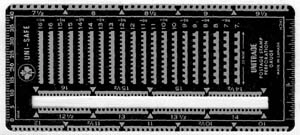
Perry, Elliott
An award winning American philatelist and noted author; perhaps best known for his "Pat Paragraphs".
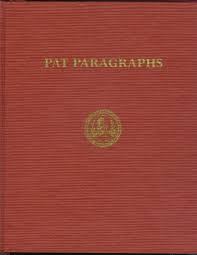
Persian Rug
The nickname given to the two-hundred and the five-hundred dollar revenue stamps of 1871, known for their colorful and intricately engraved artwork resembling a Persian rug.

PF
(Philatelic Foundation) An organization that expertizes philatelic material.
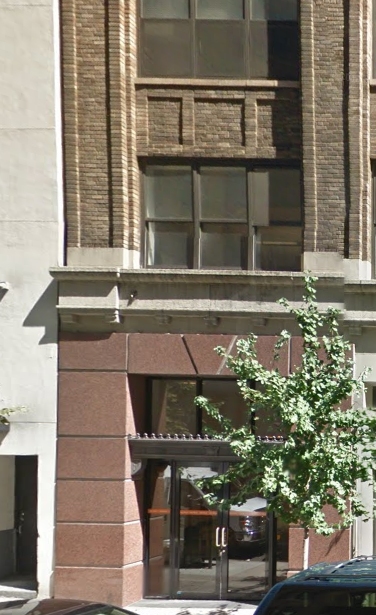
PFC (Philatelic Foundation Certificate)
Philatelic Foundation certificate of authenticity or a certificate of opinion regarding authenticity.

Philatelic Cover/Philatelic Usage
A cover that is philatelic in origin and that was made specifically to be a collectible item, as opposed to a cover produced in the normal course of commercial or personal correspondence. In general, any usage that was produced with the intent to create philatelic value is less desirable than normal usage. For example, First Day Covers are rarely as desirable as early commercial usage for stamps after 1930.

Photogravure
A form of intaglio printing that uses a printing plate created by photographic and chemical means, rather than by the more traditional methods that employed engraving a die by hand and transferring it to a plate.
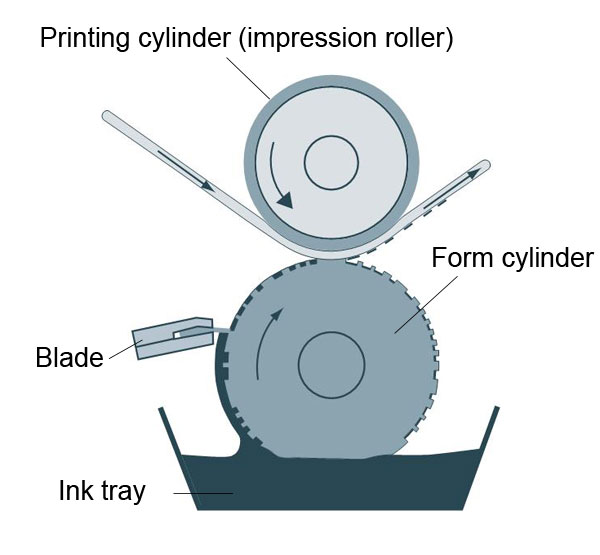
Pictorial Cancel
A cancellation that contains an illustration based on unique design elements.
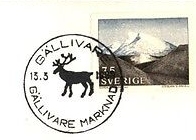
Pigeon Blood
(US 64PB) a shade of pink that legend holds is similar in color to the blood of a pigeon. This shade is difficult to distinguish from the other pinks of this stamp.

Pinkback
A stamp whose ink has bled through the paper and is visible on the back as a pinkish hue. This resulted from the use of substandard inks made from synthetic pigments used in lieu of the normal inks imported from Germany when the inks became unavailable due to the First World War. "Pink backs" are found primarily on the two, three and twelve cent perf 10 single-line watermarked stamps, US 425, 426 and 436.

Planty's
The authority on First Day Covers: Planty's Encyclopedia of Cacheted FDC's by Michael A. Mellone with Earl Planty.
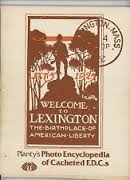
Plate Block (Plate Number Block)
A block of stamps that has a plate number printed in the attached margin. Plate blocks from flat plate printings usually have six stamps with the plate number near the center stamp as in the example shown. Plate blocks from rotary press printing usually have four stamps with the plate number in a corner margin as in the example at right. Note that the Mothers of America stamp was printed using both the flat plate, and the rotary press method. Many of the early plate blocks have marginal imprints adding to the collectibility of the block.
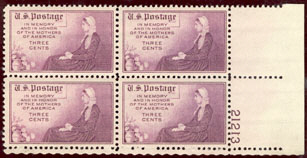
Plate Crack/Plate Flaw
A crack or other defect in the printing plate. The flaw must be visible on a stamp or it is of little importance to collectors.
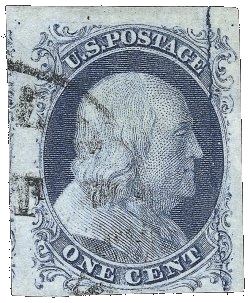
Plate Layout
The number of rows and columns of stamps in each pane and the way in which the panes are laid out with respect to each other and the plate that contains them.
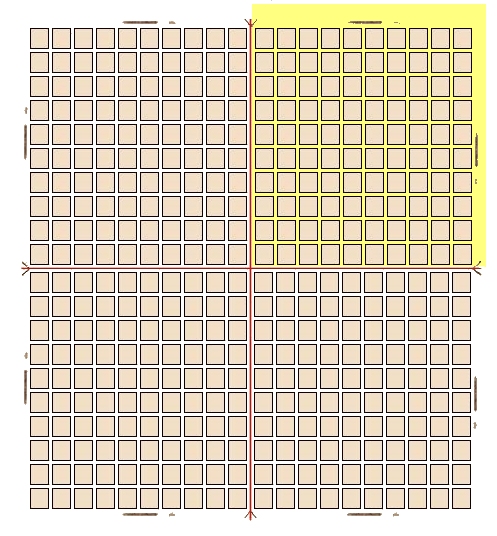
Plate Number
A number in the margin of a printing plate typically assigned sequentially with no two plates given the same number. This was partially to keep the plates from getting mixed up at the printing plant. Plate number "1" was used to print the two cent stamp of 1894. The Bureau of Engraving and Printing continued to use the sequential plate numbering system until 1980.
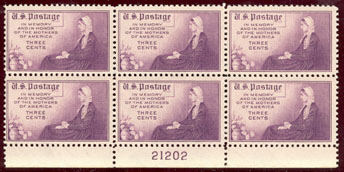
Plate Number Coil (PNC)
Coil stamps produced since 1981 with a plate number appearing at the bottom of the stamp. These numbers are often single digits. The plate number only appears at certain intervals and not on every stamp. Notice the "7" at the bottom of the middle stamp at right.
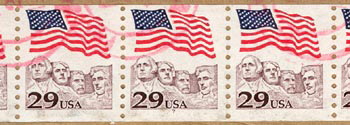
Plate Number Single
An individual stamp, mint or used, with a plate number attached. In theory this is all that is needed to identify the plate number of the sheet from which the stamp was produced.
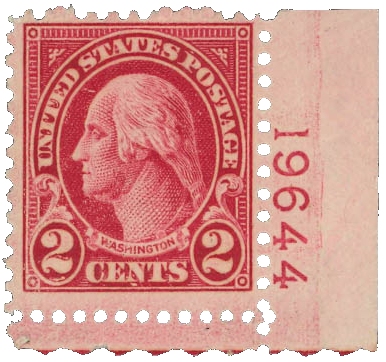
Plate Position
An individual stamp, mint or used, with a plate number attached. In theory this is all that is needed to identify the plate number of the sheet from which the stamp was produced.
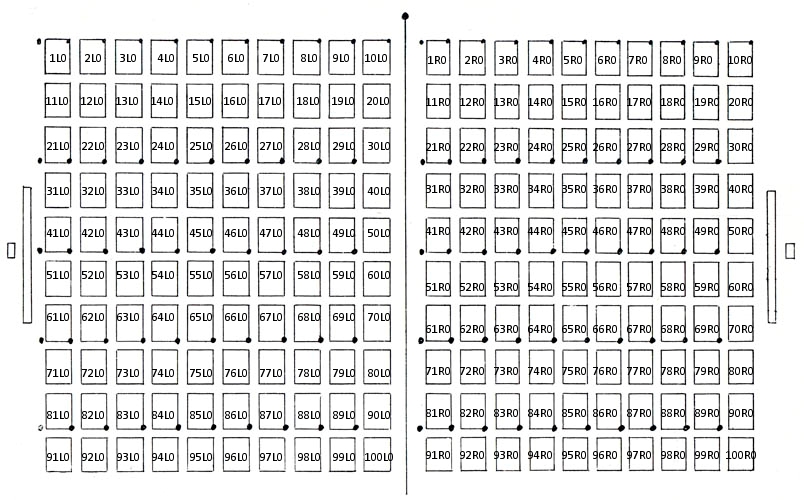
Plating
The art of reconstructing a plate by determining the position of any given stamp on a pane. The positions are numbered from the top left to the bottom right, with the top left being position "1". Plating is a very tedious process and requires many sets of multiples and all of the margin stamps, again hopefully as multiples. It is similar to solving a jigsaw puzzle, although the pieces required to solve the puzzle may run a small fortune. Plating has been done primarily on early stamps where each position stamp has minor variations. On many modern stamps (post-1930 or so) plating is unnecessary since the stamps have been saved as sheets. A sheet is the ultimate way to plate a stamp since the puzzle has already been completed.

POD
An abbreviation for the United States "Post Office Department"; predates teh use of USPS.
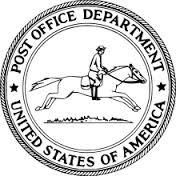
Pony Express
The Pony Express was the idea of Wells Fargo, who needed to cut the delivery time of mail to the West Coast. It cut the time in half, from twenty days to ten days, by carrying the mail via a relay team of horses and riders. Though only in operation for 19 months, between April 1860 and October 1861 when it was rendered obsolete by the completion of the trans-continental telegraph system, the Pony Express is an icon of American ingenuity and determination.
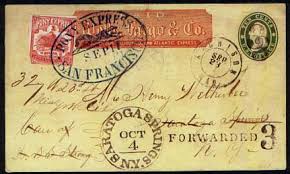
Porto Rico (Puerto Rico)
An overprint on many of the Bureau issues, after the U.S. retained control of Puerto Rico in 1898. The overprint was dropped in 1900 and normal U.S. postage stamps were used thereafter.
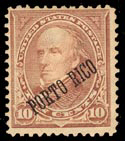
Position Plate Block (Matched Set)
Plate blocks from each of the sides or corners of a sheet, i.e. one from each pane, all with identical plate numbers.

Possessions
U.S. held (foreign) territories for which postage stamps were issued. These include the Canal Zone, Cuba, the Danish West Indies, Guam, Hawaii, the Philippines, Puerto Rico, and the Ryukyu Islands.

Postage Due Stamp
A stamp that indicates underpayment of postage, to be paid by the recipient.
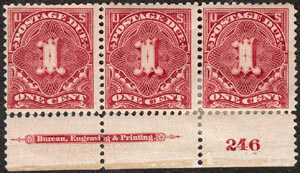
Postage Stamp
A piece of gummed or self-adhesive paper, produced by an authorized printer for placement on the outside of a package or letter to show evidence of payment of postage
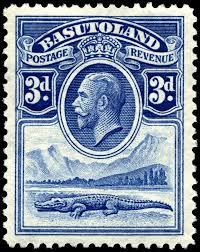
Postal History
The study and collection of any mail piece that went through the mail stream, in particular those that chronicle significant developments in the movement of the mails. Postal history collectors look for covers that detail a new postage rate or usage, that define unusual origins or destinations or route of delivery, or that display interesting postal markings.
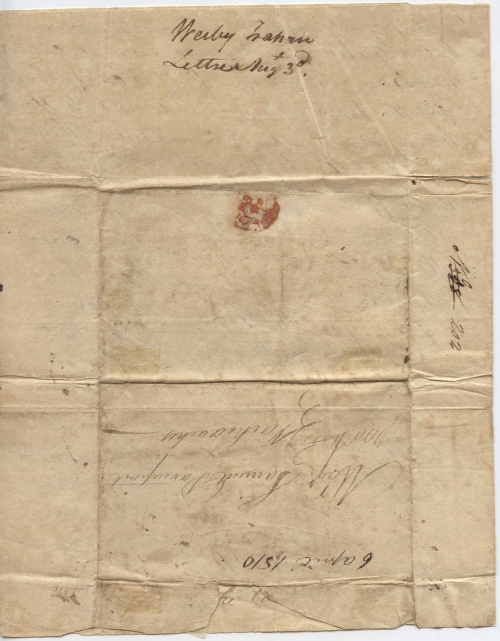
Postal Note Stamp
A short-lived set of US stamps, 1945-1951, issued to make up odd amounts, usually under one dollar, to supplement the Postal Money Order service. Other countries also issued these types stamps.
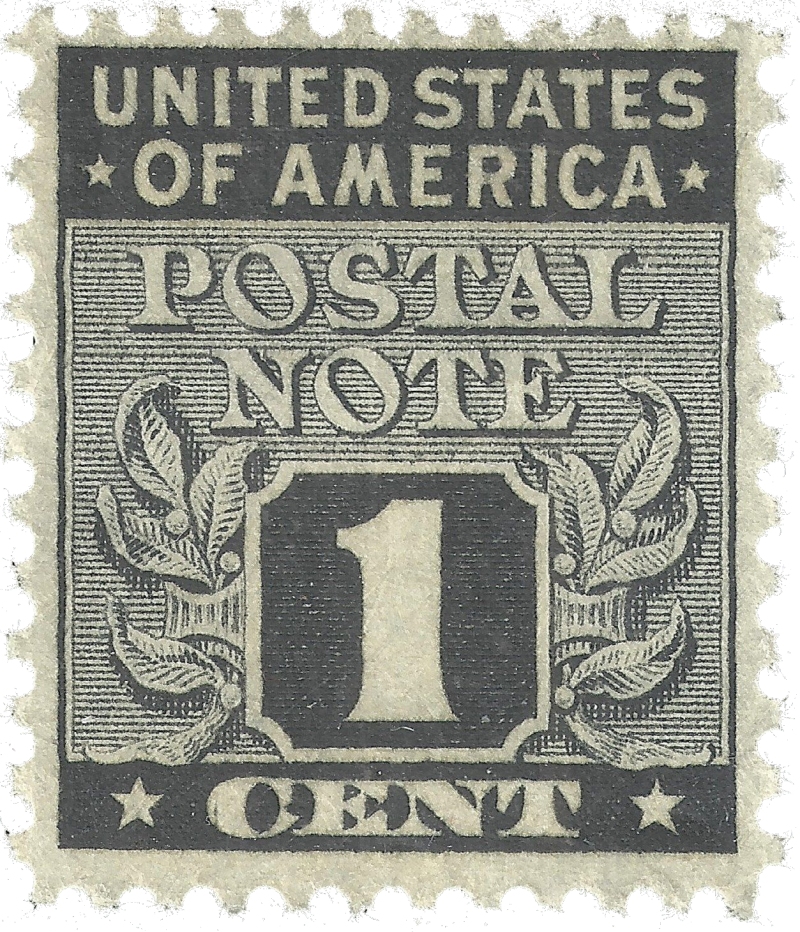
Postal Savings Stamps
stamps issued by the Post Office Department redeemable in the form of credits to Postal Savings accounts. This service lasted from 1911-1966.
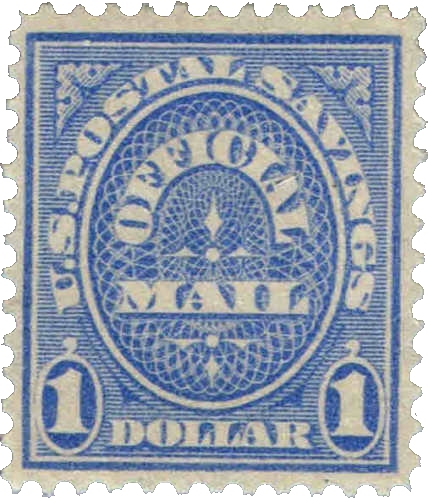
Postcard Vs Postal Card
A postcard is a privately produced mailing card, usually illustrated, and does not include postage. A postal card is produced by the Post Office and includes a marking indicating that the current rate of postage has been paid, that is it has a stamp-like indicium.

Postmark
A mark, either hand struck, pen, or machine-made, indicating the time and place of mailing. A postmark need not cancel the stamp, it can be placed anywhere on the outside of the mailing matter, although it usually is placed to the immediate left of the stamp, and was sometimes used to cancel the stamp. The terms postmark and cancellation are not interchangeable, although they are often incorrectly used that way. A handstamp that applies both a cancel and a postmark is called a duplex.
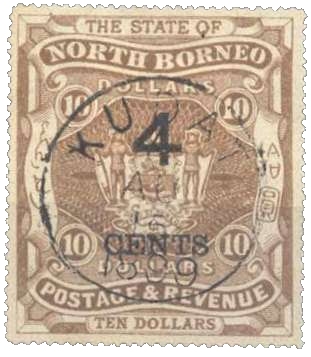
Postmaster General (PMG)
The chief executive officer of the United States Post Office Department and its successor, the United States Postal Service.
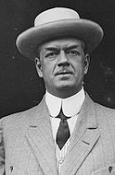
Postmasters' Provisionals
The chief executive officer of the United States Post Office Department and its successor, the United States Postal Service.
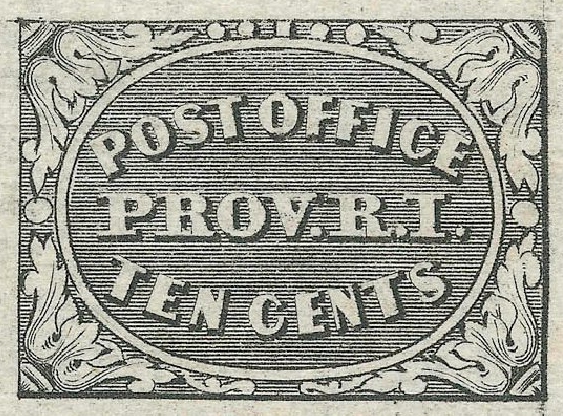
Precancel
Precancels are postage stamps that have been canceled before being used on letters or packages. There are two categories of precancels: Bureau precancels, precancels applied by the BEP and local precancels, precancels applied by the local city or town post office.
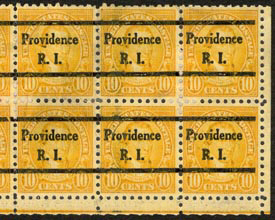
Predates
Predates are stamps or postal stationery postmarked with dates earlier than the officially designated First Day of sale. EDUs are listed only when no first day cover is known. Predate covers are certainly desirable, but a predate does not supersede existing FDCs. In general, predates are not valued higher than First Day Covers other than for novelty, and they are not considered as earliest known usage, EDUs or EKUs.
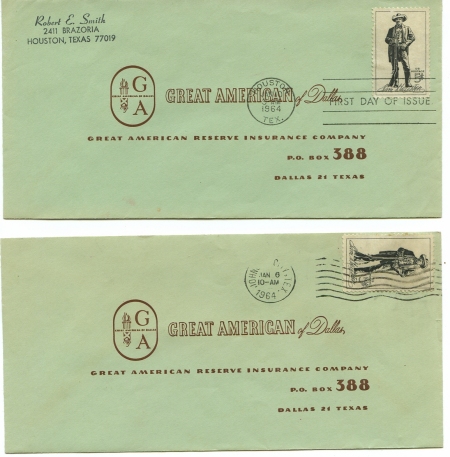
Premieres Gravures (1861 First Designs and Colors)
A term used to describe the first designs and colors of the 1861 Series. The premieres gravures were never sold through post offices, rather they were released through postal officials. For this reason these stamps are considered essays, although there are many examples of the stamps postally used, not typical for proofs and essays.
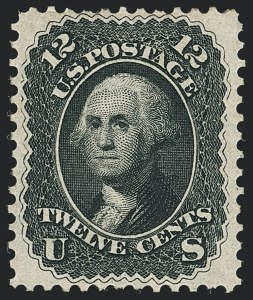
Preprinting Paper Fold/Crease
If a stamp is folded or creased as it passes through the printing press, the area of the fold over will remain unprinted, resulting in a freakish appearance when the paper is unfolded.
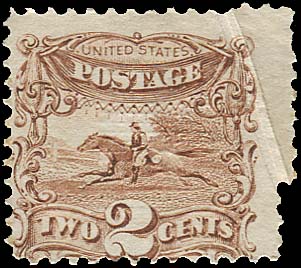
Press Sheet (uncut)
A sheet of unseparated panes of stamps. Typically sheets of stamps are perforated before being delivered to post offices for distribution.

Prexie
A US stamp from the 1938 Series of definitives, also known as the Presidential Issue and the Fifth Bureau Issue. Collecting solo usage of these stamps on commercial cover is becoming increasing popular.
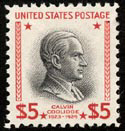
Printers Initials
A long row or rows of seemingly meaningless initials. According to Johl: "These are the initials of the pressmen who used the plates in printing the stamps. Every time a plate was taken from the vault for printing, the Bureau required, as a check system, that each workmen impress his initial on the plate margin before putting the plate to press. This system was discontinued some time prior to the introduction of the 1912 regular issue."
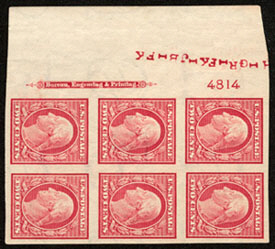
Printer's Waste
Printer's waste is defective, malformed or misprinted stamps that are normally discarded and burned by the printer, stamps that can only reach the public through carelessness or theft. Sometimes printer s waste is passed off as an error, freak or oddity, but it is not.
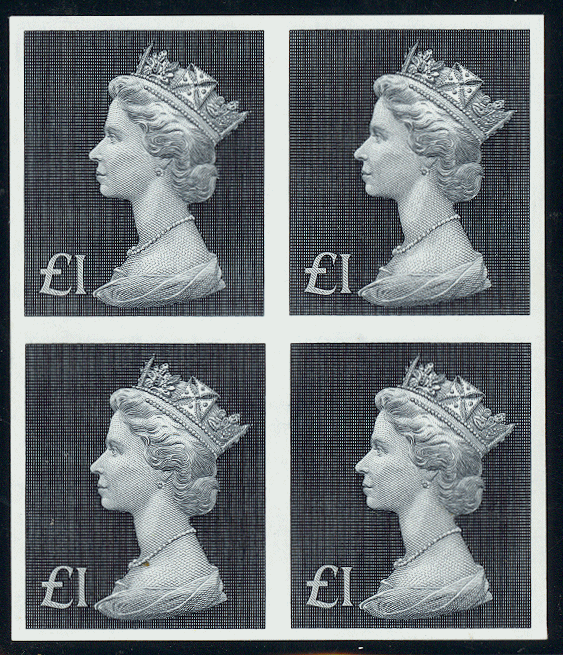
Private Perforations
(Vending and Affixing Machine Perforations) a variety of perforations applied by private firms, for use in vending and affixing machines.
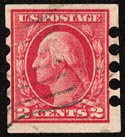
Progressive Die Proof
Proofs made from an incomplete die showing the craftsman how the work on a die is progressing
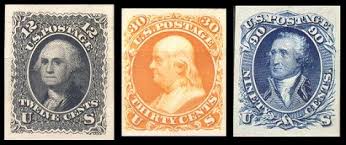
Proof
a trial impression printed directly from a die or a plate for inspection purposes and sometimes to determine what color looks best, as in "trial color proofs".
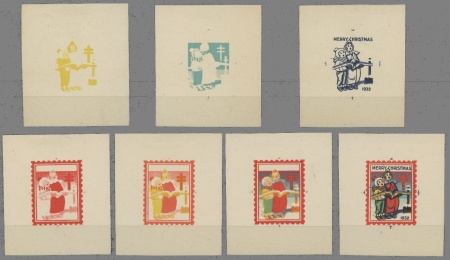
Proprietary Stamp
Revenue stamps used to indicate a tax was paid on a variety of commodities, for example cosmetics, medicines, matches, perfumes or playing cards.

Pulled Perf
A completely missing perf, sometimes to the point of having been torn below the perforations.
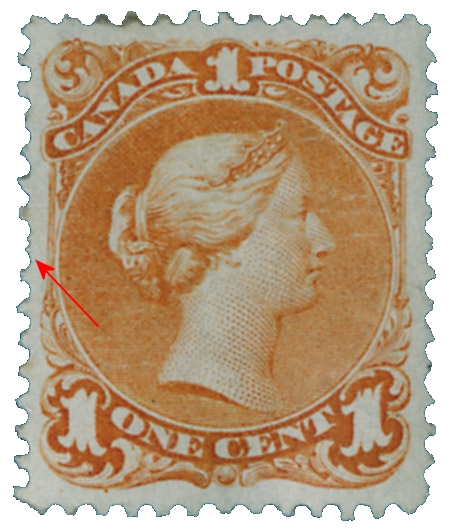
Punch Cancel
A hole punched or initials in a stamp as a form of defacement. Punch cancels are often found on revenue and telegraph stamps.
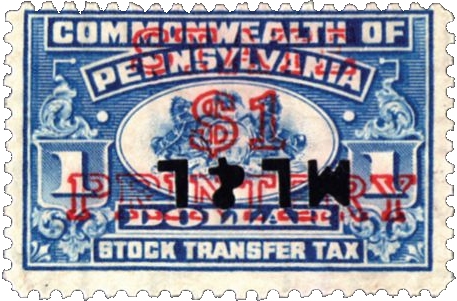
Punch Marks
Marks made on an engraved plate using a punch tool. Examples include the plate finisher or printer's initials, "F" - for finished, and the "A" and stars found on many of the US third and fourth Bureau issue plates.
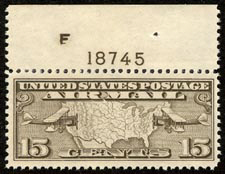
PVI
An acronym for "Postage Validation Imprint". Introduced in 1993, these imprints provide the following information: city, state, zip code, date, postage amount, mail class code, and the "IRT" or "Integrated Retail Terminal". This is a slowly but surely growing area of collector interest.
